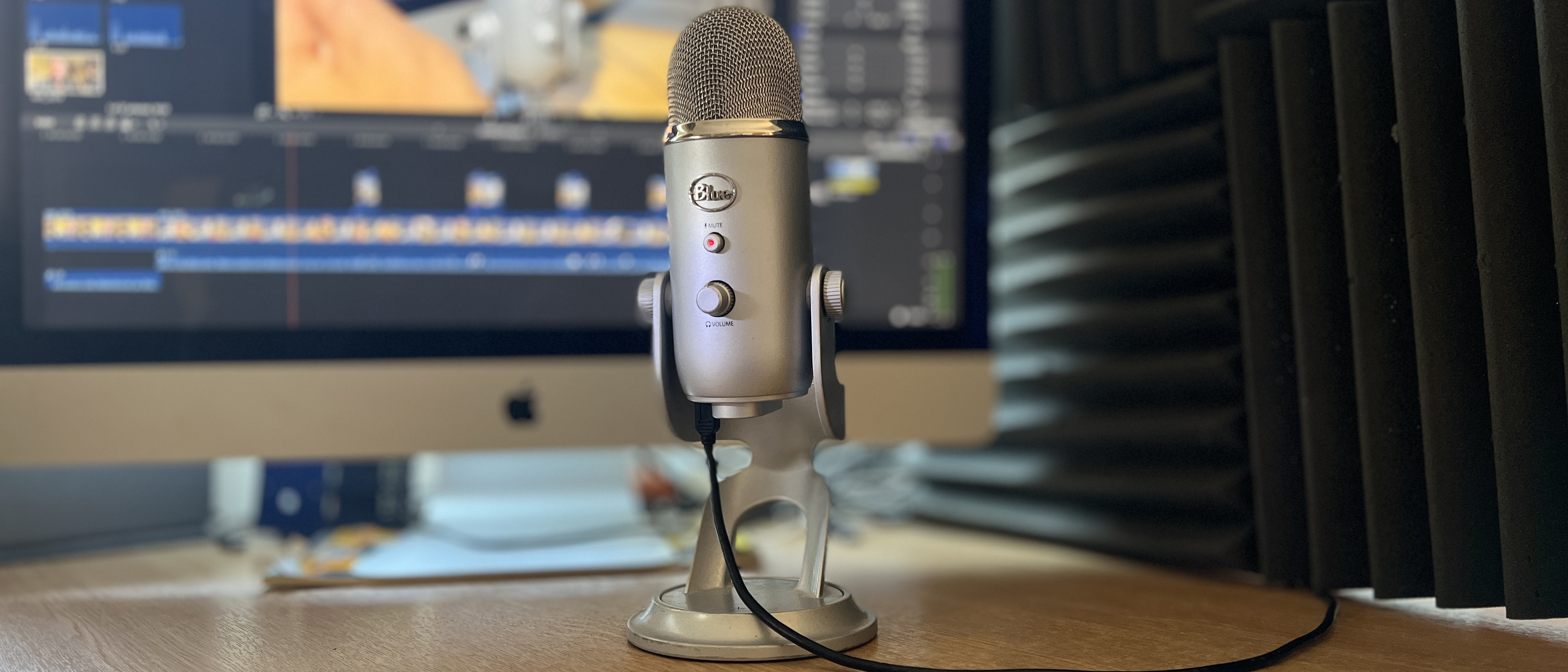Digital Camera World Verdict
The Blue Yeti is excellent value for money as it’s sturdily built, sounds great and lasts for years. Slightly cheaper equivalents such as the plastic JOBY Wavo POD are available but here you get what you pay for, such as a metal body and a wider range of polar patterns. You could call me biased and perhaps I am as I’ve been recording voice-overs on my Blue Yeti for years.
Pros
- +
Four polar patterns
- +
Excellent sound quality
- +
Mostly made of metal
- +
Lasts for years
Cons
- -
Thin pads on base can lead to hum
Why you can trust Digital Camera World
The Blue Yeti is the solution to many audio problems. Your PC’s built-in camera may do a great job of capturing high quality footage, but the accompanying sound will most likely be lacking in quality. The audio captured by a PC’s built-in mic can sound tinny and distant and will probably pick up the hum of external drives, the whir of your PC’s fan and echo from sound bouncing off the walls of your home office.
This plug and play USB multi-pattern mic instantly improves the quality of the sound captured by your PC (or Mac) thanks to a host of features. It’s perfect for improving the production values of podcasts and voice-overs. It’s also built to last as I’ve used the same Blue Yeti for 8 years to record many hours of ‘How To’ tutorials for the cover discs of a range of magazines (including Digital Camera Magazine, PhotoPlus and NPhoto).
Specifications
Power Required/Consumption: 5V 150mA
Sample Rate: 48 kHz
Bit Rate: 16-bit
Capsules: 3 Blue-proprietary 14mm condenser capsules
Polar Patterns: Cardioid, Bidirectional, Omnidirectional, Stereo
Frequency Response: 20Hz - 20kHz
Impedance: 16 ohms
Power Output (RMS): 130 mW
Frequency Response: 15 Hz - 22 kHz
Signal to Noise: 100dB
Key features
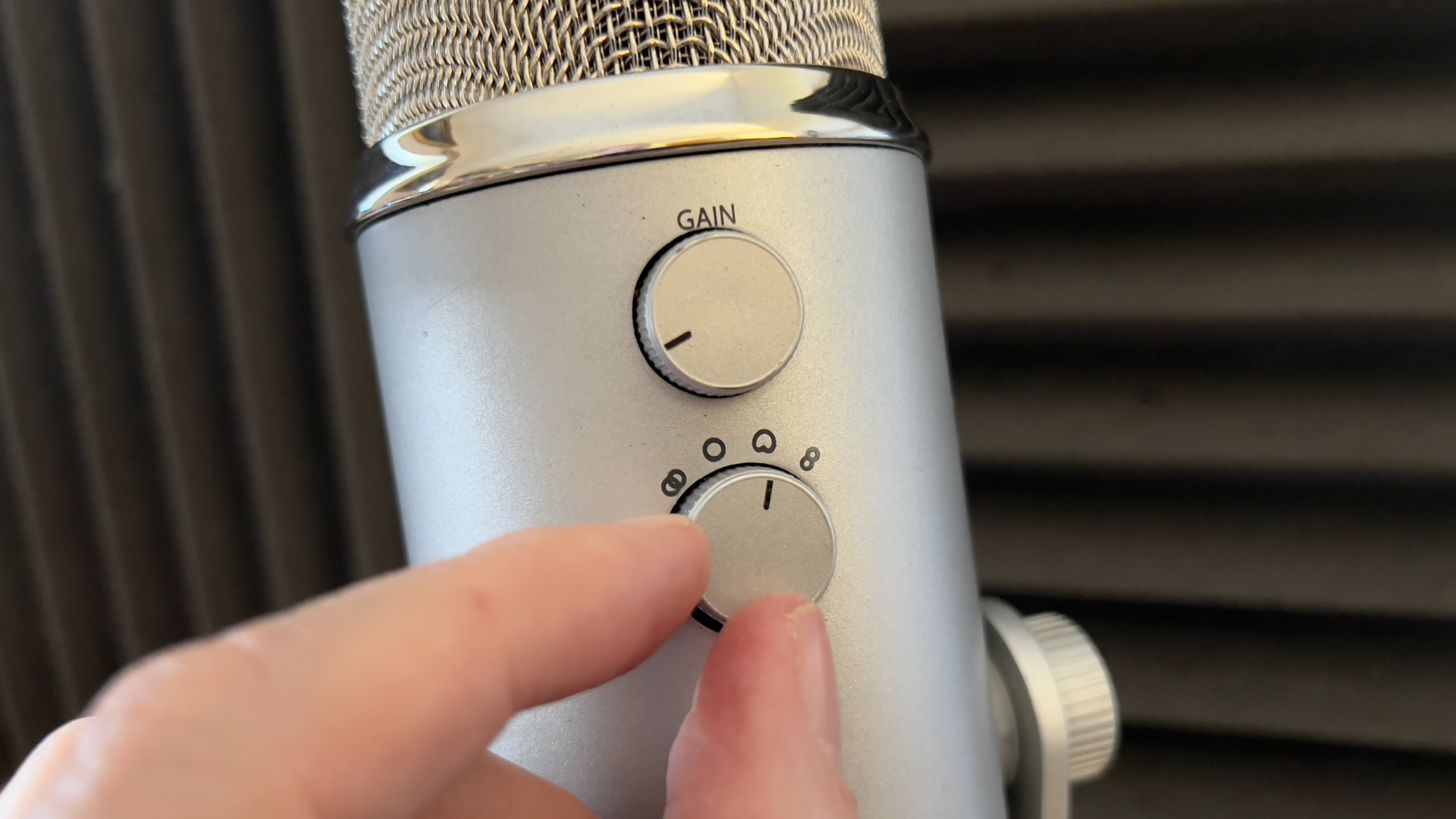
The Blue Yeti receives power directly from your PC once you plug it into a USB slot, so there’s no issue with charging batteries or having the mic fail during a crucial voice-over recording or live streaming session.
It has four polar patterns which change the way it listens to its surroundings. The most useful is the Cardioid polar pattern. This causes the mic to be sensitive to sound from directly in front of the Yeti. This pattern helps reduce the presence of room noise and the whir of background drives.
See the Yeti Blue in action in this video:
If you need to record an interview then you can switch it to Bidirectional with a click of the Pattern knob. Now it will listen to sound from both the front and back of the mic (without being picking up too many extraneous ambient sounds from the left or right.).
You can flick the switch to Omnidirectional if you need to record a 360º sound field. For certain productions such as music performances you may find the Stereo polar pattern useful as it places audio sources in specific positions in the sound field.
Build and handling
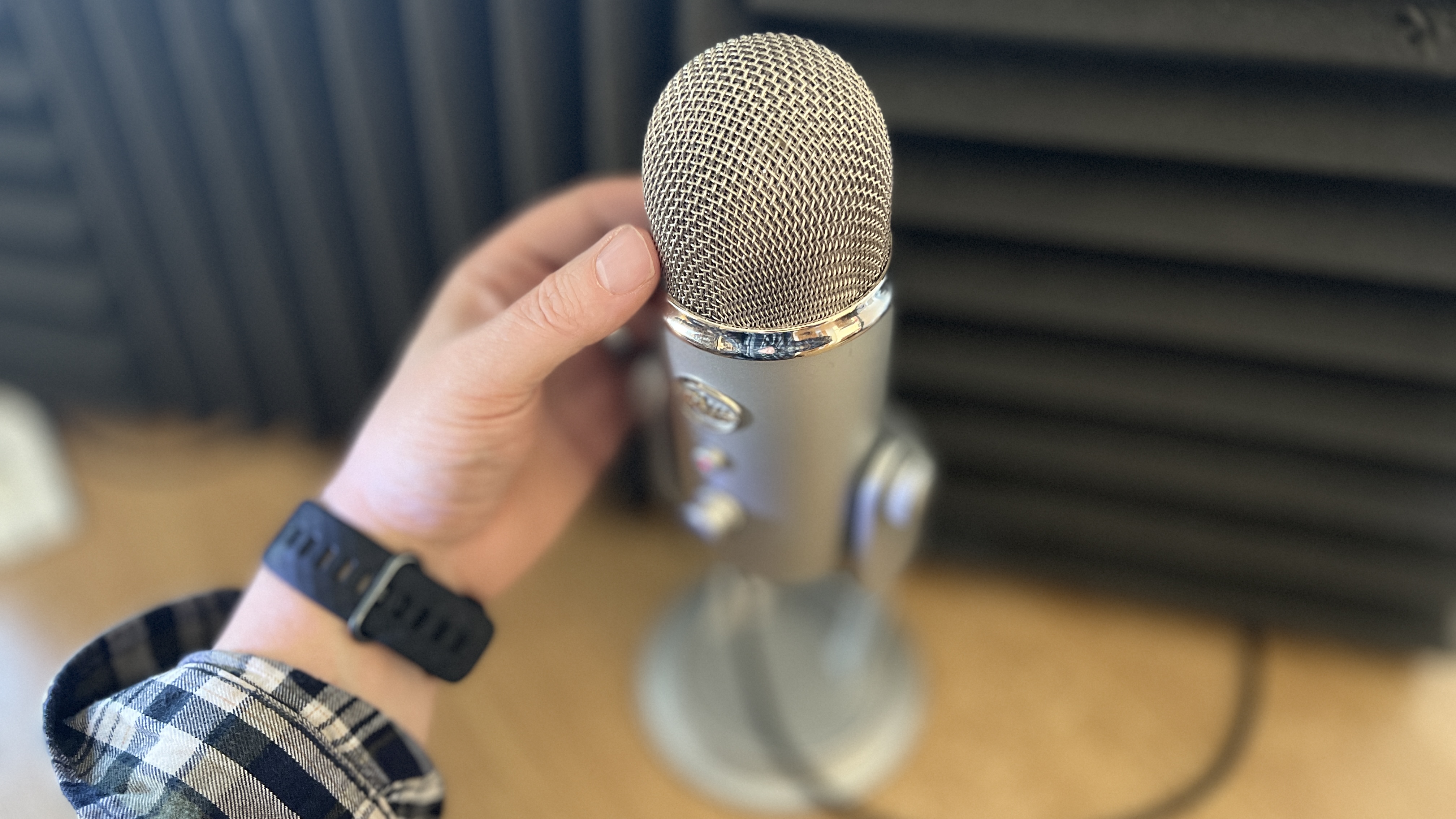
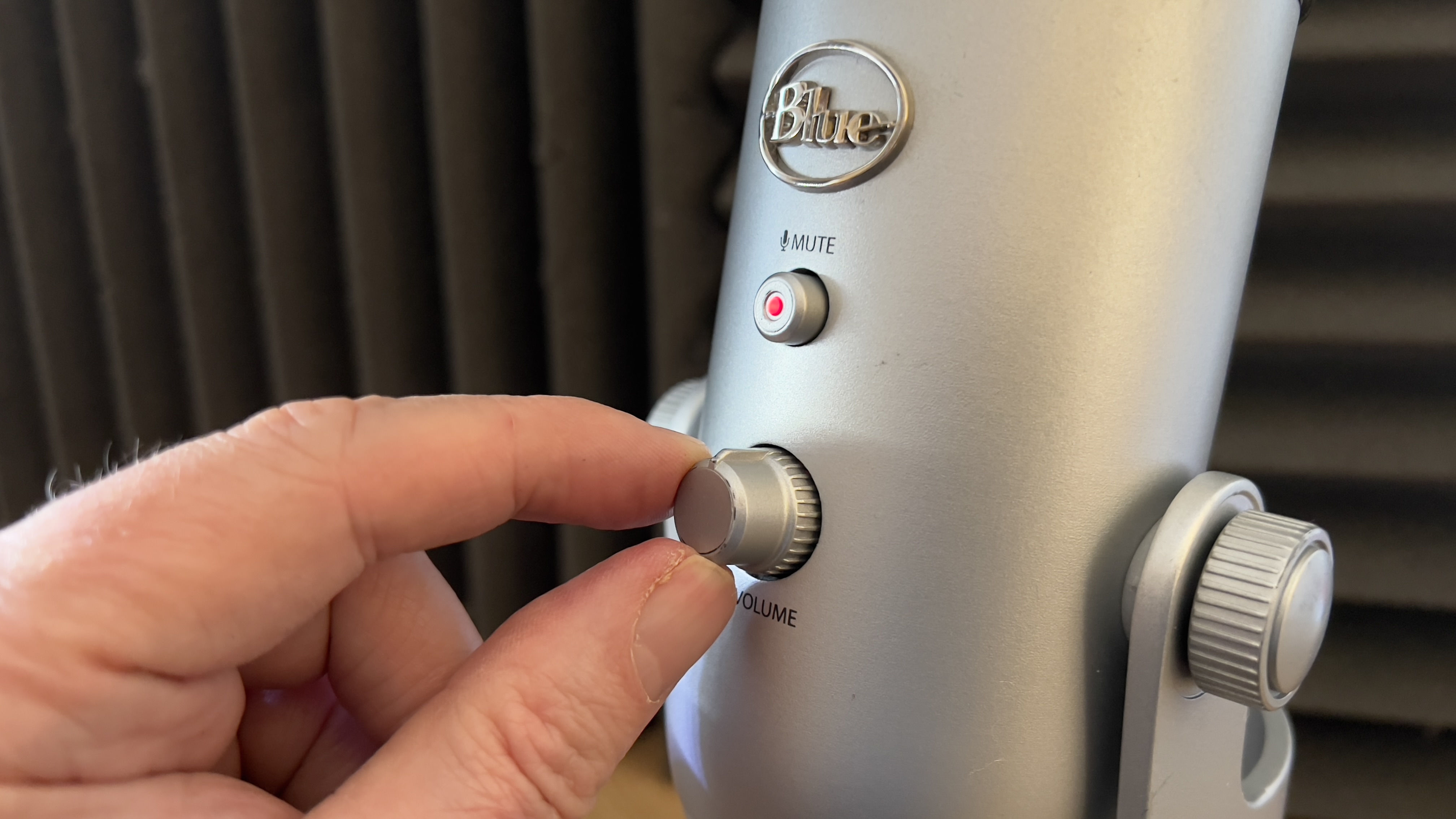
The Blue Yeti comes mounted on a stand that can be tilted to angle the mic towards your face for optimum sound gathering. Its cylindrical capsule shape and shiny curved recording mesh evoke the retro look of classic radio studio mics from the 1940s and 50s, which gives it an old school charm.
It’s solidly built with a metal body and stand (and at just over 3lbs in weight it’s not going to topple over if you happen hit it with a flapping hand while performing into the mic!). A 3.5mm headphone jack enables you to monitor the sound coming into the mic and you can control the headphone volume with the gain button at the front. There’s also a handy mute button in case you need to take a phone call during a live stream.
On the rear of the mic is the polar pattern knob (see key features above) and the all important Gain knob that adjusts the strength of the sound levels being picked up by the Yeti. There’s also a thread at the bottom in case you want to mount the mic on an adjustable boom arm instead of on its metal small stand. A boom arm gives you more control of the mic’s position.
Performance
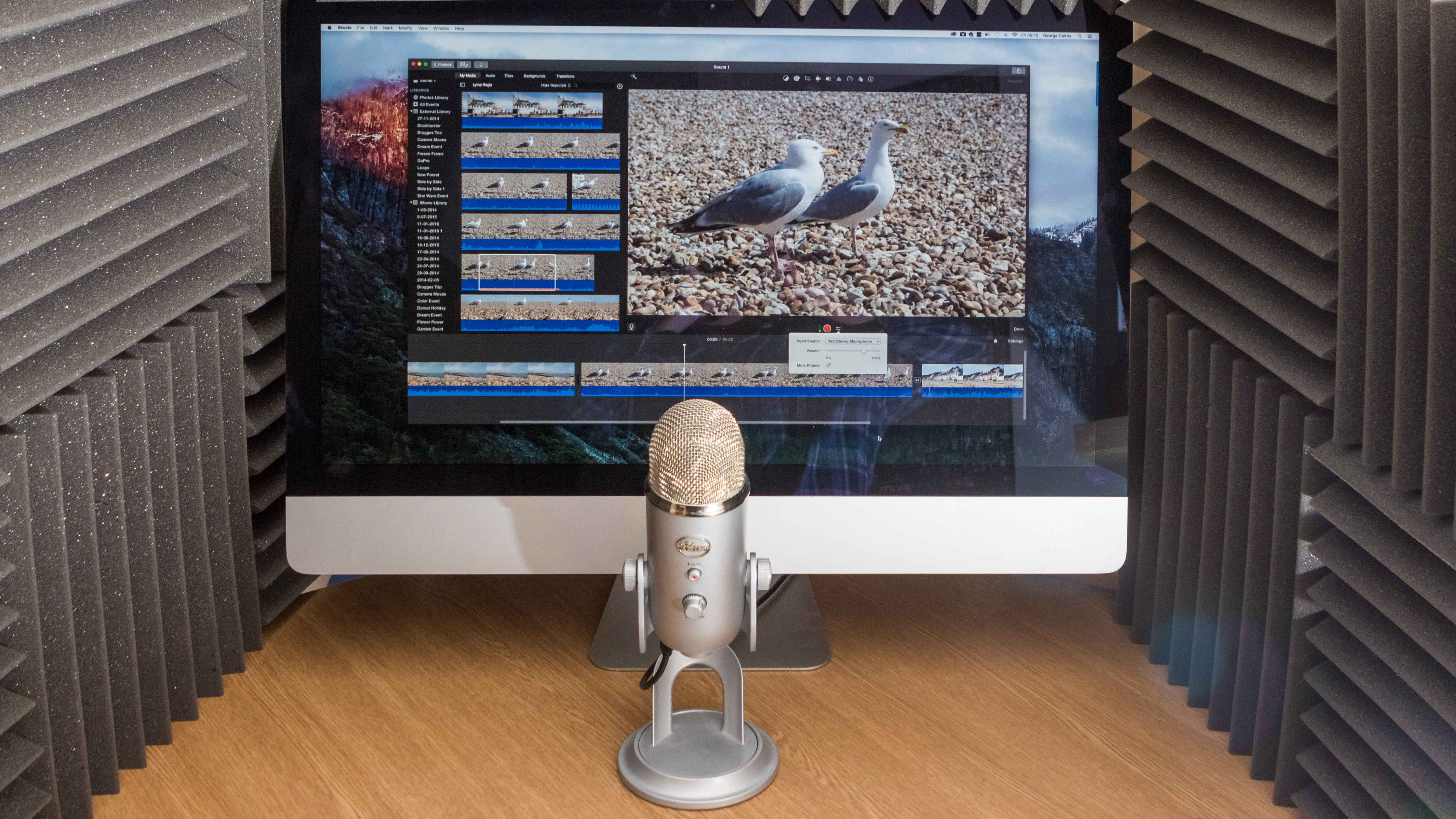
If you’re monitoring audio via the built-in headphone jack you’ll be pleased to hear that there’s zero latency, so you won’t be distracted by sound lagging behind the subject as they talk.
Your Mac or PC will detect the Yeti once you plug it in to a USB socket and you can adjust the mic’s input gain on the device itself, in your PC’s Settings menu or in post-production apps such as Final Cut Pro or Premiere Pro (when you capture a voice over).
The Yeti Blue records a clear, full-bodied, natural sounding audio signal as you’ll hear if you play our supporting video. As with all desktop mics you can improve the quality of the audio recording by placing some acoustic treatment tiles around your home studio. It also helps to turn off unneeded external drives to stop vibration from their spinning hard drives from spoiling your recordings.
Despite the thin rubber pads on its base, the Blue Yeti can still pick up vibrations that add hum to a recording. By placing the Yeti on a thicker padded object such as a book you can alleviate vibration-induced hum.
Verdict
The Blue Yeti provides an affordable and effective way to improve the production values of your sound recordings. It should be an essential part of your kit if you record voice-overs, podcasts or even live music in a home studio environment. It will also help you be heard more clearly above the competing cacophony of a Zoom meeting!
A cheaper alternative is available in the form of the Joby Wavo PRO, which does a similar job in terms of sound quality, though it has fewer polar patterns and doesn’t feel as solid and dependable as the Blue Yeti due to a predominantly plastic build.
Read more:
• Best microphones
• Best USB mic
• Best iPhone mic
• Best audio recorders
• Best audio editing software
George has been freelancing as a photo fixing and creative tutorial writer since 2002, working for award winning titles such as Digital Camera, PhotoPlus, N-Photo and Practical Photoshop. He's expert in communicating the ins and outs of Photoshop and Lightroom, as well as producing video production tutorials on Final Cut Pro and iMovie for magazines such as iCreate and Mac Format. He also produces regular and exclusive Photoshop CC tutorials for his YouTube channel.

